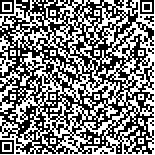单娇阳,戚伟航,张一,等.基于功能性近红外光谱成像技术观察全面发育迟缓患儿在自然刺激范式下的脑功能低频振幅变化[J].中华物理医学与康复杂志,2025,47(8):740-744
扫码阅读全文

|
| 基于功能性近红外光谱成像技术观察全面发育迟缓患儿在自然刺激范式下的脑功能低频振幅变化 |
|
| |
| DOI:10.3760/cma.j.cn421666-20250301-00188 |
| 中文关键词: 功能性近红外光谱成像 全面发育迟缓 自然刺激范式 低频振幅 |
| 英文关键词: Functional near-infrared spectroscopy Global developmental delay Naturalistic stimuli Low-frequency amplitude fluctuations |
| 基金项目:河南省自然科学基金(242300420081);河南省医学科技攻关计划省部共建项目重点项目(SBGJ202402069);国家卫生健康委出生缺陷预防重点实验室开放课题(NHCKLBDP202508) |
|
| 摘要点击次数: 787 |
| 全文下载次数: 669 |
| 中文摘要: |
| 目的 通过功能性近红外光谱成像技术(fNIRS)探究全面发育迟缓(GDD)患儿与健康儿童在脑功能标准化低频振幅(zALFF)上的差异,并分析其与Gesell发育量表(GDS)评分之间的相关性。 方法 选取31例2~4岁的GDD患儿(GDD组)和29名与之年龄匹配的健康儿童(HC组),利用fNIRS在自然刺激范式下观察2组受试儿童的大脑功能活动,并监测其脑血流中的氧合血红蛋白(HbO)变化,计算各个通道的zALFF值。比较2组间44个通道的zALFF差异,并分析不同通道zALFF值与Gesell评分的相关性。 结果 GDD组患儿左侧前运动区及辅助运动区(24和26通道)的zALFF高于HC组,右额极区(10通道)、右侧前运动和辅助运动区(第43通道)的zALFF低于HC组,差异有统计学意义(P<0.05)。Spearman秩相关分析结果显示,GDD患儿右侧前运动和辅助运动区的zALFF与GDS评分中的个人-社交能力呈正相关(r=0.37,P=0.04)。 结论 GDD患儿的认知、运动发育迟缓可能与右额极区、双侧前运动和辅助运动区的功能异常有关,右侧前运动和辅助运动区zALFF值与社交能力呈正相关。 |
| 英文摘要: |
| Objective To explore the differences in the standardized z-score amplitude of low-frequency fluctuations (zALFFs) across different brain regions between children with global developmental delay (GDD) and healthy children (HC) using functional near-infrared spectroscopy (fNIRS), and correlating zALFF values with the subjects′ Gesell Developmental Scale (GDS) scores. Methods Thirty-one children aged 2-4 years with GDD and 29 HC of the same age were studied. fNIRS was used to record both groups′ brain activity in response to natural stimuli and to measure any changes in oxygenated hemoglobin (HbO) levels in cerebral blood flow. zALFF values were calculated and the values of 44 channels were compared between the two groups. The correlations between zALFF values and GDS scores were computed. Results The zALFF values of the children with GDD were significantly lower than those of the HC in the right frontal pole (channel 10) and the right pre-motor and supplementary motor areas (channel 43). In contrast, the zALFF values in the left pre-motor and supplementary motor areas (channels 24 and 26) were significantly higher in the children with GDD compared to the HC. Spearman ranked correlation analysis revealed that the zALFF values in the right pre-motor and supplementary motor areas (channel 43) were positively correlated with socialization scores on the GDS (r=0.37, P≤0.05). Conclusions The delays in cognitive and motor development in children with GDD may be associated with functional abnormalities in the right frontal polar region and the bilateral premotor and supplementary motor areas. zALFF values from the right premotor and supplementary motor areas are positively correlated with social skills. |
|
查看全文
查看/发表评论 下载PDF阅读器 |
| 关闭 |